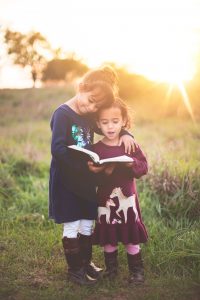Goals

Brief description of the issue
Boys’ difficulties in reading and writing skills are one factor that is linked to their school dropout rate, which is higher than girls’ (Boyer, 2009). Because of their socialization, not naturally, boys fall behind in reading compared to girls and are less motivated to read (Lavoie, 2011). To minimize this gap, we must develop, with boys and girls, an appreciation for reading starting in early childhood and break down stereotypes stating that reading is an essentially female activity. Yet, a lot of books showcase very stereotypical stories and characters that reinforce these beliefs. Children’s books might also have a role to play in the underrepresentation of women in science (Wilbraham & Caldwell, 2018). A well-picked book, both from the point of view of tackling gender stereotypes and as regards to its content, which must also be a topic of interest for boys, can help children develop a critical look as well as daily reading habits. Good reading skills as well as a low buy-in of gender stereotypes are effectively correlated with school success and retention, boys and girls alike (Réseau Réussite Montréal, 2018).
Choosing a book free from gender stereotypes
Children’s books carry along many gender and racial stereotypes. It is, among others, through these stories and the representations of men and women they offer that children build their own gender and cultural identity (SCF, 2018). In order to limit young children’s buy-in of gender and racial stereotypes, it is important to offer them books that break down those stereotypes instead of reinforcing them.
To guide you through your choice of books that are free of gender stereotypes, you can use one of the two assessment grids proposed in the documents section below. It holds a few questions to ask yourself when you look at characters, illustrations and roles represented in a book. This great blog post can also help you assess books you already have or that you are planning to purchase.
Here are a few suggestions of books encouraging children to have a gender-equal representation of the world as well as Indigenous worldviews :
- The Eagle’s Path, by Michelle Corneau
- 47,000 beads, by Koja Adeyoha and Angel Adeyoha
- Online reading video: https://www.facebook.com/watch/?v=235263634505764
- Sweetest Kulu, by Celina Kalluk
- Online reading video: https://www.youtube.com/watch?v=KxDZgrv12SY
- Indian No More, by Charlene Willing McManis
- Ho’onani: Hula Warrior, by Heather Gale
- Online reading video: https://www.youtube.com/watch?v=YAreUoez6og
- Max, the Stubborn Little Wolf, by Marie-Odile Judes
- All I Want to Be is Me, by Phyllis Rothblatt
- When the Bees Fly Home, by Andrea Cheng
- La poète: Pauline Johnson, by David Alexander Robertson
- La Croqueuse de pierre, by Louise Flaherty
Finally, as reading is still considered today as a feminine activity and that, consequently, the literary offer is still very focused on female readers (and traditionally female interests), it is important to choose books that draw boys’ interests to hook them up with a subject they like, and then bring them to diversify their reading choices gradually. Choosing books showcasing animals and nature, fictional or not, is a good way to stay away from gender stereotypes.
How to use a gender-equal book?
There are a multitude of gender-equal books tackling gender stereotypes in various ways. Here are a few reflection questions to explore with students after or while reading a book focused on breaking down gender stereotypes and fostering equality between boys and girls:
- How did you like the book? Are there things that surprised you in the story? Which ones? Why?
- To which character do you identify the most? The least? Why?
- Are there characters that resemble people you know? Which ones and why?
- According to you, is the story realistic? Why?
You can also find, in the documents section below, a few educational activities to facilitate with your students after reading some of the books listed earlier.
How to challenge gender stereotypes when we are reading a “traditional” book?
Trying to deconstruct and uncover gender stereotypes in an elementary educational setting doesn’t imply removing all books portraying stereotypical representations of boys and girls, nor does it require using only books of which the primary goal is to tackle gender stereotypes. It can be interesting, educational and helpful in terms of critical thinking to keep some of these books to read them with children and ask them questions about the story, such as:
- What is the boy/girl doing in the story? Could we switch their roles? Why? (For example, in the typical fairy tale, could the princess fight the dragon and free the prince?)
- What is this mom/dad doing? Could they switch roles? How does it work for you at home?
- This boy/girl character works as a [traditional job for gender]. Do you know boys/girls doing this job? For example, do you know female firefighters or male nurses?
- Let’s retell the story while switching roles or changing the lines!
